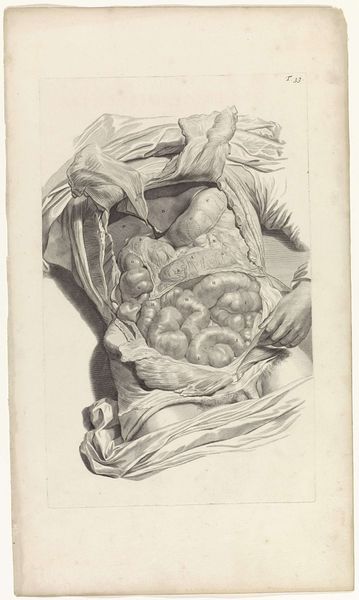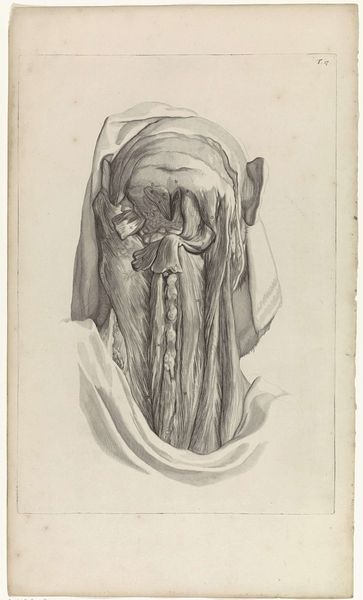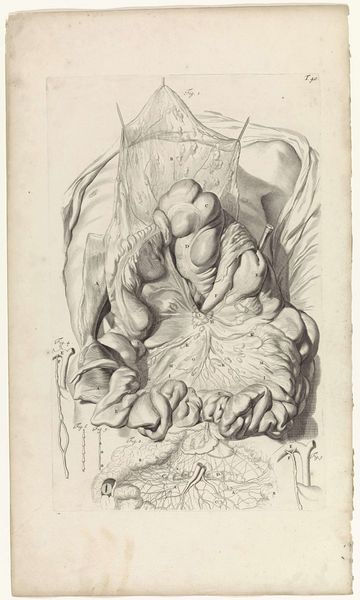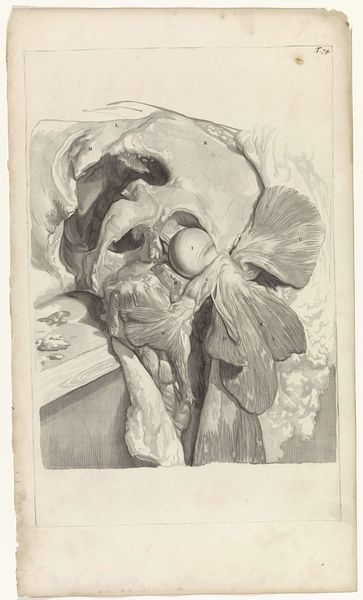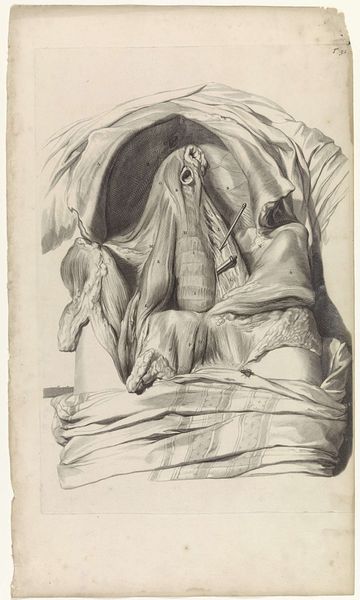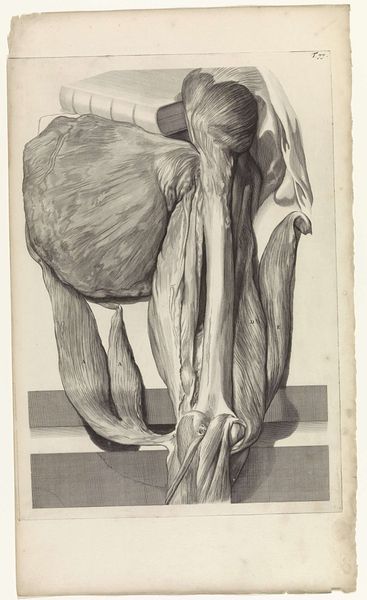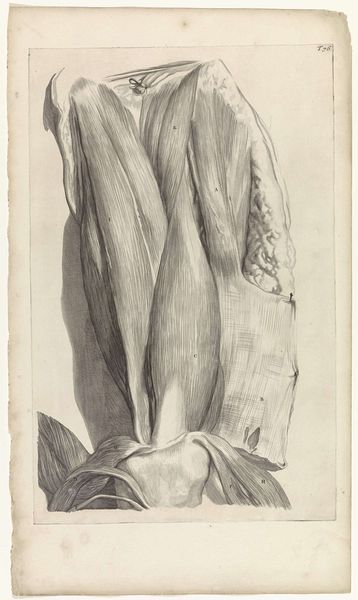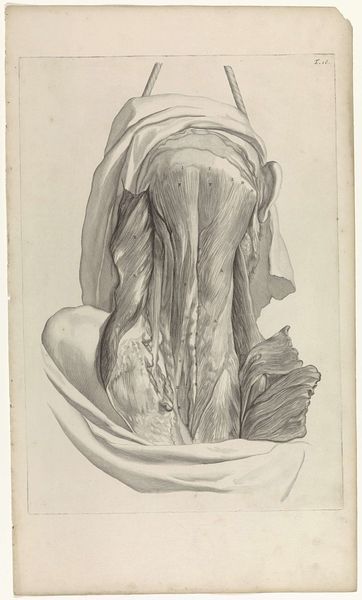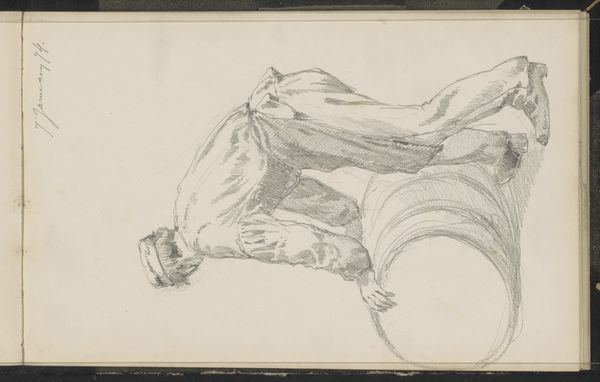
Tweede anatomische studie van de spieren van het linkerdijbeen en de heup 1685
0:00
0:00
pietervangunst
Rijksmuseum
drawing, graphite, pen
#
portrait
#
pencil drawn
#
drawing
#
baroque
#
pencil sketch
#
figuration
#
pencil drawing
#
graphite
#
pen
#
history-painting
#
academic-art
Dimensions: width 315 mm, height 488 mm
Copyright: Rijks Museum: Open Domain
Curator: This intriguing drawing from 1685, found here at the Rijksmuseum, is titled "Tweede anatomische studie van de spieren van het linkerdijbeen en de heup" or "Second anatomical study of the muscles of the left thigh and hip," by Pieter van Gunst. Editor: My gut reaction? Intense! There’s something viscerally gripping about this meticulously rendered… dissection, I suppose. A sense of cold precision and almost baroque drama at the same time. Is it the knife, maybe? Curator: The presence of the scalpel immediately implicates the viewer. Notice the intricate layering, each plane carefully labeled. The play of light and shadow isn’t just aesthetic. It clarifies the relationships between tissue, sinew, bone. Editor: Definitely. It reminds me of those old scientific textbooks—only, way more artful. I’m trying to imagine what this tells us about the era. Is it purely objective scientific documentation? I wonder about the cultural fascination – obsession even – with understanding the body during the Baroque period. Curator: Absolutely! There was a significant societal shift. Anatomy moved from philosophical curiosity to medical imperative, impacting art. These aren't simple illustrations; they echo religious depictions of martyrdom or sacrifice. Note how light singles out the... separated flesh? Editor: It makes you question, right? We bring our own baggage when looking at these things, this collision of art, science and… something a bit unnerving! Do you see a shadow of memento mori too? That “remember you must die” thing, popping up when we see our fleeting fragile nature in front of us. I am now seeing so many meanings! Curator: Undoubtedly, that sensibility courses through it. It acknowledges mortality, while simultaneously asserting human dominance, knowledge, our power to analyze even death itself. The engraving’s realism would've been a kind of technological spectacle. Editor: It's still a bit of a spectacle. Pieter van Gunst… captured a very unsettling beauty here. Maybe "beauty" isn't even the word, perhaps, honesty? Whatever. Thank you. I needed this little jolt to the system! Curator: Thank you. This peek beneath the skin truly puts human inquiry itself on display, it asks questions of then and it asks questions of now.
Comments
No comments
Be the first to comment and join the conversation on the ultimate creative platform.
